Domestic hamsters "registered" in the homes and apartments of residents of many countries around the world, including among Russians. These small fluffy animals constantly delight their owners with relentless playfulness and, in the same way, touches them with their cheerful habits, creating additional accents of comfort and warmth in their homes. But for the hamster to acquire “good manners”, he must be systematically trained.
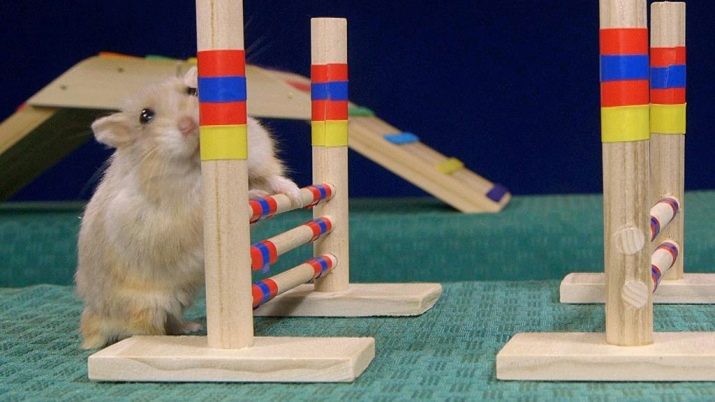
Short description
Domestic hamsters belong to the order of rodents - the most numerous of mammals. They prefer a secluded lifestyle, but with the right training, they get used to the owner quickly and love cheerful communication with him. These are twilight animals. In the daytime, they are inactive and sleep until dusk.
The organism of hamsters has a high metabolism, so they tolerate physical exertion well and can run along the “treadmill” of a rotating wheel up to 10 km per day.
The vision of hamsters is poorly developed, they do not respond to color changes, but have excellent sense of smell and hearing. They orient themselves in space solely by smells and sounds, sensitively react to touch. They have a good memory, are able to remember family members even after a long separation.
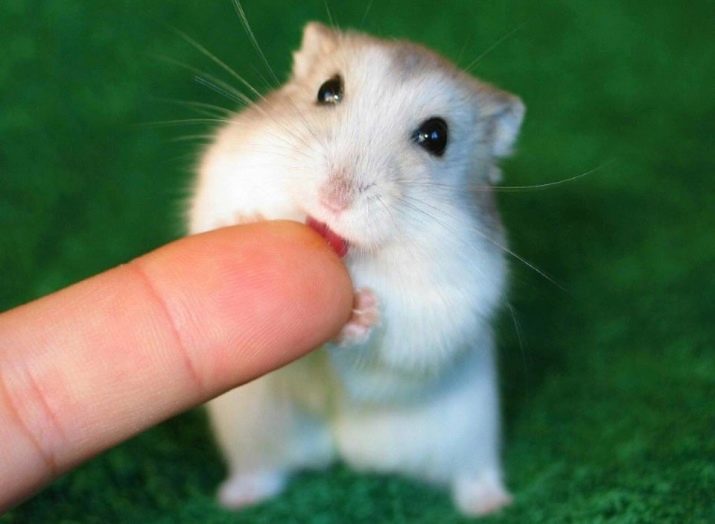
What to consider when purchasing an animal
Sometimes people recklessly start a hamster, seeing it with friends and watching funny tricks and games, poorly imagining that this is preceded by painstaking educational work with the pet.
You should not decide to buy a hamster without first familiarizing yourself with its biological characteristics and lifestyle. Discuss all the points with your family members, especially if you have children.It is better to refuse the purchase if one of the relatives categorically does not tolerate the presence of rodents. Negative tense atmosphere will not lead to anything good for the hamster or for family members.
If everything is settled with everyone, carry out thorough preparation so that the hamster lives in comfortable conditions. Need a good spacious cage, a house for shelter and sleep, a running wheel, a feeding trough, a drinking bowl, accessories for games. Take care that the cage stands in a calm, quiet place, but without complete isolation, is inaccessible to other pets. It is necessary for the animal to gradually get used to the sounds and smells around its home, to hear the voices of the household. Prepare a variety of feeds, taking into account recommendations for the conditions of detention.
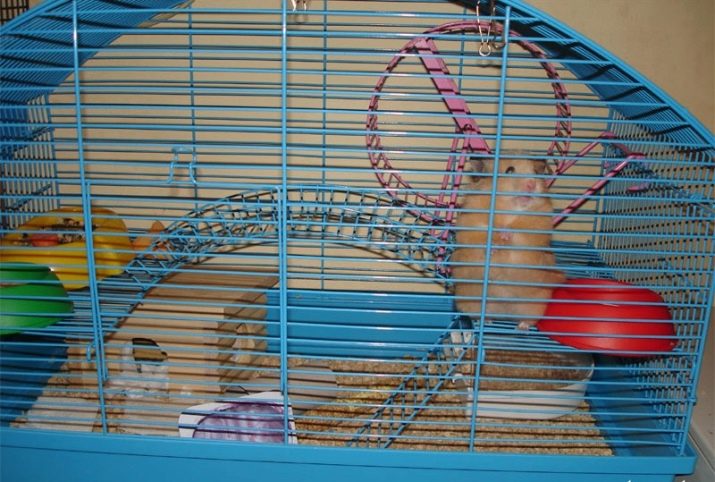
The first days in the new house
By their nature, these animals are not bold and often afraid of everyone and everything, especially in the new environment after purchase. The main mistake of many people is that when they come home from the pet store with a live purchase, the new owners joyfully begin to hold it in their hands, try to stroke it and, without ceasing, lisp, naively thinking that the animal is delighted with such communication. Having received a well-deserved rebuff from the animal, they are sincerely amazed when the hamster painfully bites. In fact, the animal is in deep stress. He was separated from his usual surroundings, brought unclear where, strangers seized. A natural defensive reaction is triggered, the pet bites and struggles to break free, run away and hide.
Give your hamster complete peace of mind for about a week. Keep track of feed in the feeder and clean water in the drinker. Do not stand too close when the hamster is eating.
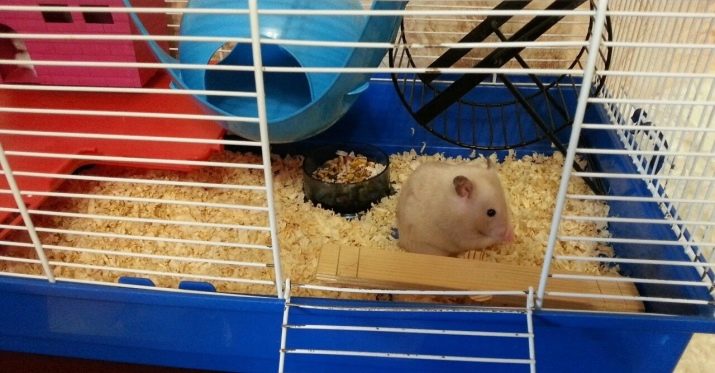
From a distance, speak amiably with him, often call a nickname, then in the head of a fluffy an association of familiar voice sounds with delicious feeding will form.
Start taming
Not a single pet will love the owner from the first day of acquaintance just because he purchased it. All animals go through periods of adaptation, domestication, and upbringing, and such a little funny little fluffy as a domestic hamster is no exception. The general rules for taming animals fully apply to hamsters: patience, calmness, leisurelyness, perseverance, kindness, affection, trust.
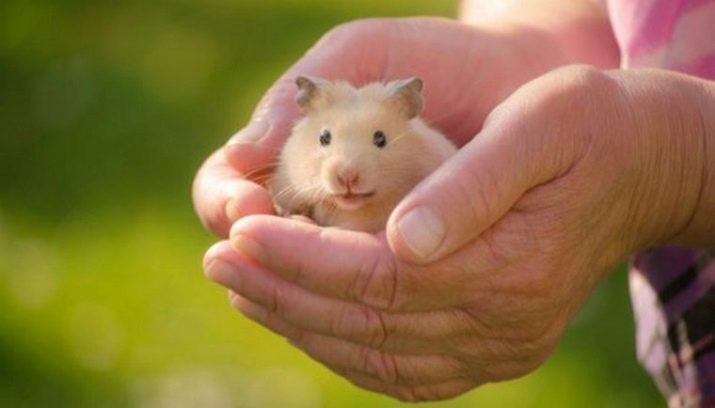
If the pet is a little comfortable in the new home and is no longer hiding in the house at the sight of you, you can gradually begin to closer together. According to your observations, you already know what kind of food it eats especially willingly, when it is most active, and when it is better not to touch it. You can not wake him during daytime sleep - this will cause severe irritation to the animal, nervousness, anxiety and even aggression.
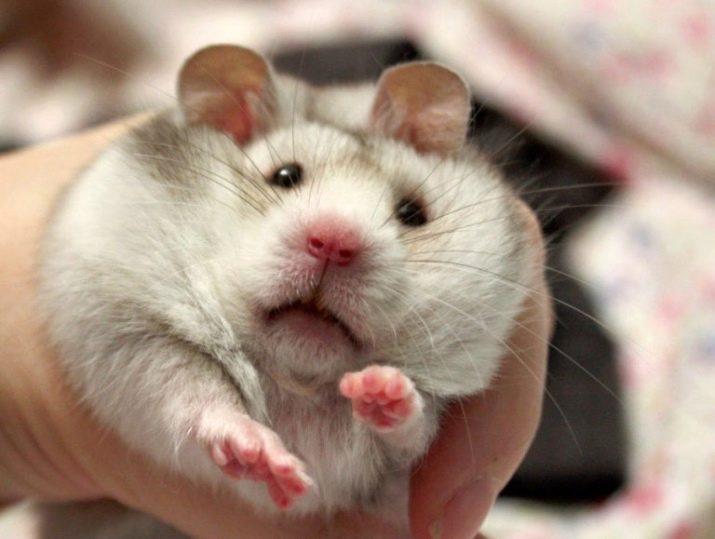
Continue to actively accustom your hamster to the sounds of your voice, and in order not to get tired of the monotonous phrases of your vocabulary, you can every day quietly read aloud an interesting book in a calm, even voice, sitting in a comfortable chair near the cage. If the pet has once again disappeared from you in the house, in no case do not get it out of there by force, be patient. Gradually, he will stop running away to the house at your approach and will calmly start eating. The hamster will understand that the sounds of a familiar voice do not carry danger.
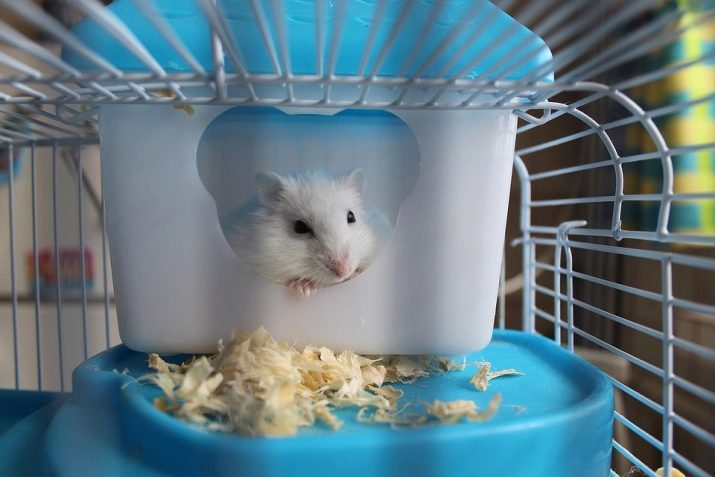
Continue taming
Now you can use your favorite fluffy goodies in taming. Carefully put in the cage "goodies": seeds, nuts, slices of vegetables, dried fruits or something else that loves a hamster. If the rodent is calm, try offering a treat from your hand, grabbing the nut with two fingers.
The pet took the food - you are on the right track, you have a small victory!
Under the influence of emotions, do not overdo it with praise, do not try to pet the pet! You risk ruining everything: the hamster does not know your hands yet and will certainly be scared, haste will throw you to the very beginning, and small signs of trust will instantly disappear.Wait a few days, do the same thing daily, let the result consolidate.
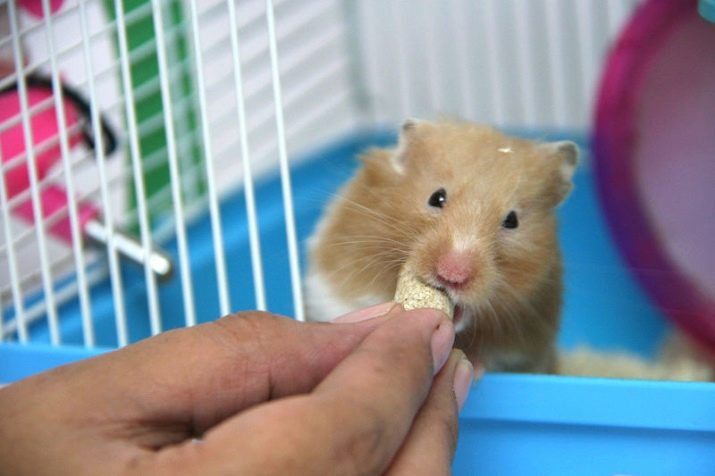
If you feel that the pet trusts you and runs for refreshments at your approach, try to gently stretch your hand with a treat into the cage. Lay the food so that the rodent cannot get it off the floor. Do not make sudden movements, do not push the pet - just calmly wait. Twirling around the bush, the pussies will have to climb into the palm of their hand to grab a treat.
Perform this daily until the hamster finally gets used to the smell of your hands and completely ceases to be afraid to crawl into the palm of your hand for a treat.
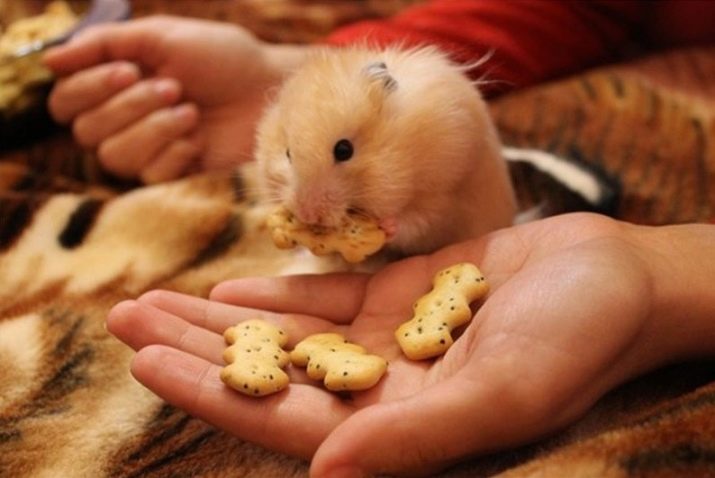
When this happens, try to pick up the hamster. Fold your palms in a “boat” and slowly place your hands with the treat in a cage. The fluffy, as usual, jumps in the palm of his hand and starts eating. Very slowly push your hands out of the cage along with the pet, quietly pronouncing affectionate words and the name of the puss. Most likely, the first few times the hamster will jump off his palms. Be understanding, do not insist. Repeat this element of education systematically, persevere, and success will come. The pet will make sure your hands are safe.

How to pick up
But now you have successfully tamed the hamster and communicate with your pet without problems. When you are going to pick it up, don’t make any sudden movements, don’t take it from behind or by the scruff of the neck: the hamster will be scared and will bite, protecting itself. Wrap his hands on both sides, try not to let him jump from his hands. Just in case, keep it above a soft surface (bed, sofa) or above your knees to avoid the risk of injury in case of accidental fall.
Hold it in your hands with utmost care so that you do not inadvertently damage a small fragile creature.
When the hamster finally gets used to his hands, he will not try to dodge, but, on the contrary, he will run up to the cage door when you approach, he will gladly wander around your hands and next to them, sniff and examine interesting things.
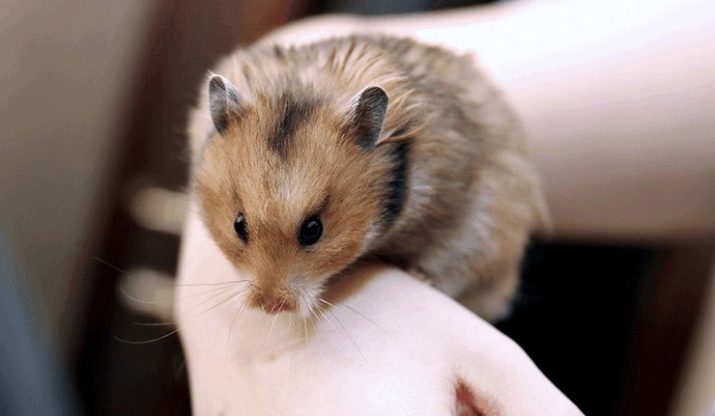
What to do while the hamster is not yet tamed
From the moment of purchase to the complete taming of the pet, several weeks will pass. At this time, it is necessary to regularly clean his home without significant harm to his emotional state. There are several ways to do this.
- Place a glass jar of hamster food in the cage. When the hamster enters the smell of food, cover the jar and remove it from the cage. This will allow you to freely “clean the apartment” of the hamster and put it back, not at all frightened.
- To the pet left the cage, you can use the bath. Tightly close the drain hole of the bathtub, put a soft litter on the bottom so as not to accidentally damage the bathtub cover. Put a cage in the bathtub, open the door, stand back and calmly wait. A curious fluffy will come out of the cage, and while he wanders along the bottom of the bathtub to explore the "surroundings", you can easily do the cleaning. Put a clean cage in the bath and put something tasty inside. The hamster will calmly enter the cage for a treat, you just have to quickly close the door.
- There is another way - to cover the animal with a towel or put on gloves to get the hamster out of the cage, but experts do not recommend doing this, unless in case of emergency, for example, if you have a pet’s health problems, show it to the veterinarian for examination. Strong fright will lead to additional stress, and the process of taming will slow down.

The end result - to tame a pet - can stretch in time for a month or more, and can take 2-3 weeks. It depends on the breed of the hamster, its age and individual characteristics, as well as to a large extent on the abilities of the owner himself, his endurance, perseverance and simple human kindness, condescension and generosity in relation to a weak living creature.
Consistently following not so difficult recommendations, you will certainly be able to accustom your pet to your hands and enjoy positive communication with this cute animal.

See how to train a hamster in the next video.










